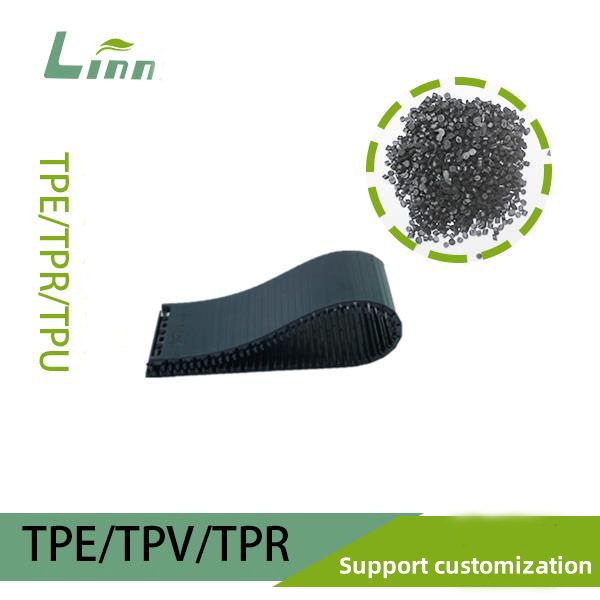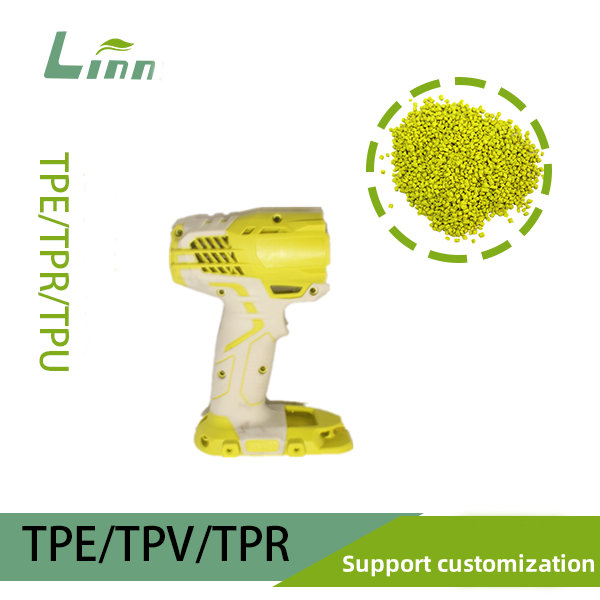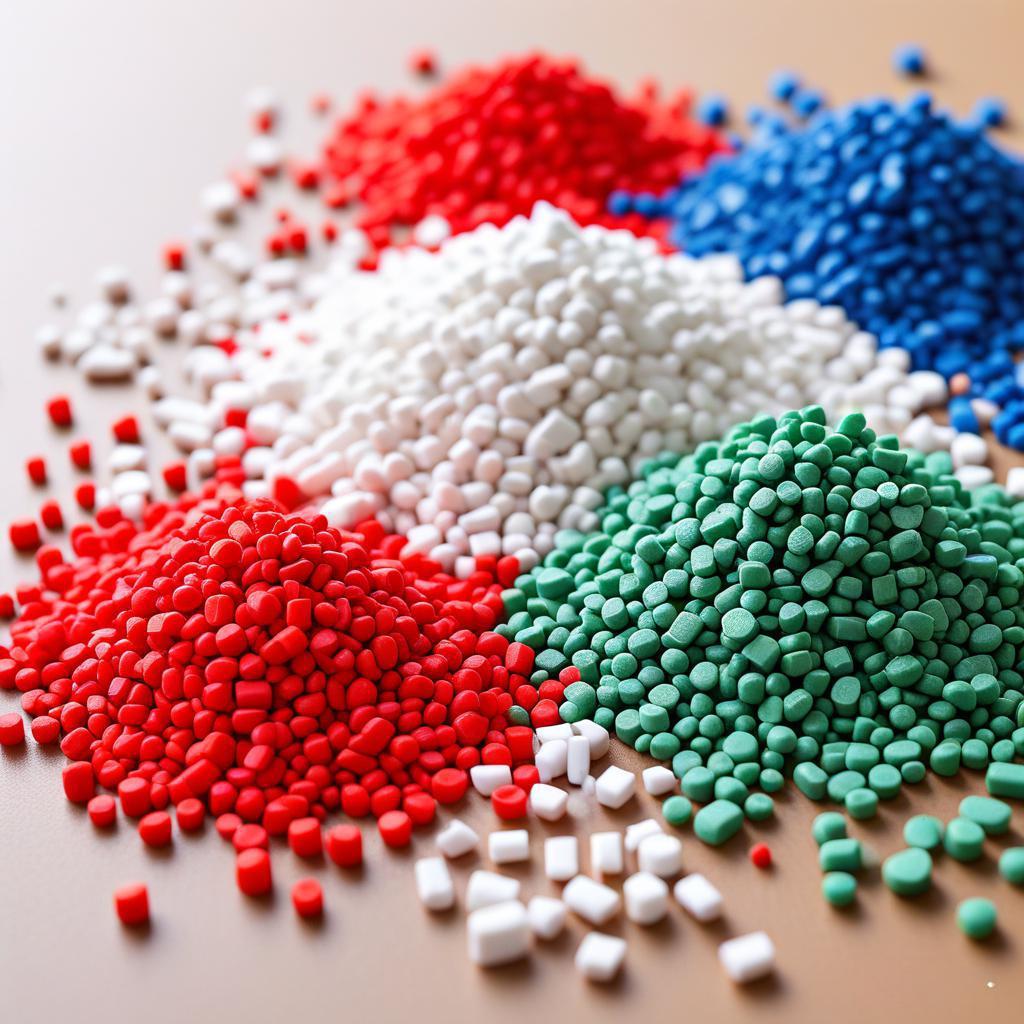With 23 years in the thermoplastic elastomer industry, I have debugged more bonding failures than most labs see in a decade. My journey began on injection molding lines for automotive weather seals, where I learned that a perfect-looking TPE part can still peel off like tape from glass if adhesion science is ignored. Later, as lead formulator for consumer electronics overmolds and medical grips, I spent countless hours in peel-test chambers, FTIR labs, and supplier audits to pinpoint why TPE refuses glue. Today I consult globally, helping brands from Shenzhen to Detroit turn “no-stick” disasters into 100 N/cm bonds. This guide distills that hard-won expertise into root causes, diagnostics, and fixes for TPE-adhesive bonding failures, all grounded in real data and field-proven protocols.
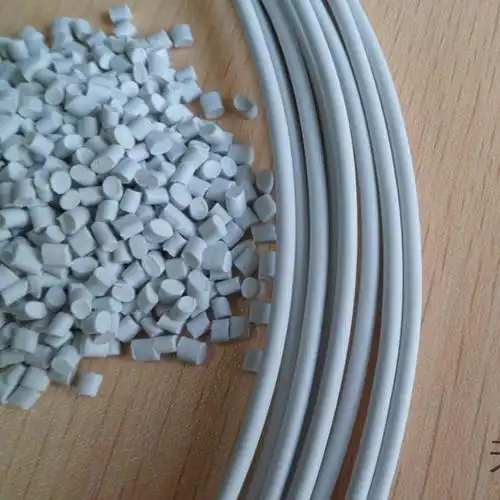
The Bonding Challenge: What “Not Sticking” Really Means
When a TPE part rejects adhesive, the failure mode is usually cohesive separation at the interface—either the glue beads up and never wets, or it wets but peels with zero residue. Peel strengths below 2 N/mm signal trouble; robust bonds exceed 8 N/mm with substrate tear. The culprit is rarely the adhesive alone. TPE surfaces are inherently low-energy (28-34 mN/m), oily from extenders, and chemically inert, creating a triple barrier to wetting, mechanical interlocking, and chemical grafting. Understanding the failure triangle—surface energy, chemistry, and topography—unlocks solutions.
Core Mechanisms of TPE Adhesion Failure
Adhesion demands three simultaneous events: intimate contact (wetting), molecular interdiffusion, and covalent or polar bridging. TPE sabotages all three. Paraffinic oils migrate outward, dropping surface energy to 20 mN/m within hours. Siloxane backbones in some TPEs form anti-stick skins. Micro-roughness from mold release leaves valleys too deep for glue penetration. Chemically, saturated SEBS chains offer few polar sites for reaction. Add processing heat that cross-links surfaces into glassy shields, and you have a perfect non-stick recipe. Each mechanism compounds the next, so fixing one without the others still fails.
Primary Reasons TPE Parts Refuse Adhesive
1. Oil Migration and Blooming: The Invisible Barrier
TPE softness comes from 30-60 phr paraffinic or naphthenic oils. These low-MW hydrocarbons diffuse to the surface at rates up to 0.1 mg/cm²/day, forming a liquid film that repels polar adhesives. Cyanoacrylates bead instantly; polyurethanes cure but delaminate under finger pressure. Migration accelerates above 40°C or with high oil loading. Field data from phone case overmolds show bloom doubling in summer warehouses, dropping contact angles from 75° to 110° in 48 hours.
Table 1: Oil Bloom Impact on Surface Energy
| Oil Loading (phr) | Bloom Rate (µg/cm²/h) | Surface Energy (mN/m) | 180° Peel (N/mm) |
|---|---|---|---|
| 30 | 0.02 | 32 | 6.2 |
| 50 | 0.08 | 26 | 1.8 |
| 70 | 0.15 | 20 | 0.4 |
2. Low Surface Energy and Polar Group Deficiency
Virgin TPE surface energy hovers at 28-34 mN/m versus 40-50 mN/m needed for most adhesives. SEBS and TPE-O lack carbonyls, hydroxyls, or amines for hydrogen bonding. Styrene blocks offer only weak pi-electron interactions. Result: adhesives with surface tension above 36 mN/m cannot spread. Contact angle tests reveal water at 95° and diiodomethane at 70°, confirming non-polar dominance.
3. Mold Release Agents and Contamination
Silicone, wax, or fatty acid release agents transfer to parts at 0.5-5 µg/cm². Even “TPE-friendly” releases like polytetrafluoroethylene dispersions leave fluorocarbon skins. Machine oils, glove powders, and dust add layers. FTIR detects Si-O peaks at 1260 cm⁻¹ on failed bonds, absent on successes. A single fingerprint transfers 50 ng/cm² skin lipids, enough to halve adhesion.
4. Surface Crystallization and Over-Pack Skin
High mold temperatures (>60°C) or slow cooling crystallize polyolefin soft segments into 0.5-2 µm thick skins. These glassy layers resist solvent attack and block adhesive penetration. SEM cross-sections show adhesive pooling above, not infiltrating. Hardness gradients confirm: surface Shore A 5-10 points higher than bulk. Over-packing to eliminate sink marks densifies this skin further.
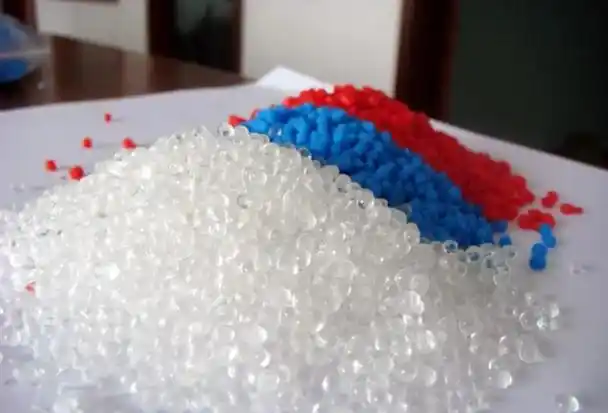
5. Incompatible Additive Packages
Flame retardants, slip agents, and anti-stats migrate alongside oils. Erucamide blooms at 0.03 mg/cm²/week, creating amide-rich surfaces that repel urethanes. Halogenated FRs hydrolyze to acids, etching adhesives. High-loading TiO2 or silica fillers protrude, reducing contact area by 15-20%. Migration maps via TOF-SIMS reveal additive hotspots correlating with peel failures.
6. Substrate Mismatch and Thermal History
Overmolding TPE onto PP works; onto ABS fails if styrene migrates from substrate into TPE, swelling the interface. Post-mold annealing above Tg relaxes chains but also drives fresh oil to surfaces. Thermal cycling in transit cracks micro-texture, trapping air pockets that prevent wetting.
7. Adhesive Selection Errors
Using hardware-store cyanoacrylate on 80A TPE guarantees failure—its 30 mN/m tension cannot wet 26 mN/m surfaces. Hot-melt EVAs lack polarity for chemical bonding. Water-based acrylics evaporate too slowly, curing before flow. Primer-less systems demand pre-treatments; ignoring this step tanks bonds.
Table 2: Adhesive Compatibility with Untreated TPE
| Adhesive Type | Surface Tension (mN/m) | Initial Tack | 24h Peel (N/mm) |
|---|---|---|---|
| Cyanoacrylate | 34 | Beads | <0.5 |
| 2K Polyurethane | 38 | Fair | 1.2 |
| Silane-Modified PU | 28 | Excellent | 7.8 |
| Hot-Melt EVA | 31 | Good | 0.8 |
8. Processing Parameters That Sabotage Bonding
High shear rates (>1000 s⁻¹) degrade oils into volatile fractions that condense on cool molds, contaminating the next shot. Short cycle times freeze release agents onto surfaces. Gate freeze-off before pack-out leaves micro-voids. Dryer temperatures above 90°C volatilize antioxidants, leaving surfaces prone to oxidation and brittleness.
9. Post-Mold Handling and Storage
Parts bagged while warm trap condensed oils. Stacking under pressure squeezes bloom to contact faces. UV exposure through clear bags oxidizes surfaces into anti-stick carbonyl layers. Humidity above 70% swells TPE, pushing internal oils outward. A 6-month warehouse study showed stacked parts losing 60% bond strength versus individually racked.
10. Material Grade and Supplier Variability
Not all SEBS is equal. Medical-grade Kraton MD6945 bonds at 8 N/mm after flame treatment; commodity G1643 needs plasma to reach 5 N/mm. Oil type matters—paraffinic migrates slower than naphthenic. Batch-to-batch Mw variation shifts viscosity, altering bloom kinetics. Supplier audits reveal some “SEBS” contain 5% SBS, introducing unsaturation that oxidizes into polar but brittle surfaces.

Diagnostic Toolkit: Finding the Failure Root
Start with visual inspection under 10x magnification—oil droplets or powdery bloom signal migration. Contact angle goniometry quantifies wetting: >90° demands treatment. FTIR-ATR scans for Si-O, C-F, or amide peaks. Peel test per ASTM D903 with 180° geometry; cohesive failure in TPE is ideal, adhesive failure points to surface issues. Cross-section SEM at 5000x reveals skin thickness and adhesive infiltration depth. Thermal analysis (DSC) flags crystallization exotherms. Combine findings to pinpoint dominant cause.
Proven Surface Activation Methods
Plasma and Corona: Oxygen Insertion
Low-pressure oxygen plasma (100 W, 60 s) raises surface energy to 68 mN/m by implanting C=O and O-H groups. Bonds jump from 0.5 to 9 N/mm with PU adhesive. Corona discharge (3 kW, 1 m/min) achieves 55 mN/m on flat parts. Both oxidize bloom temporarily, so bond within 30 minutes. Plasma penetrates 3D geometries better; corona suits high-speed lines.
| Treatment | Energy (mN/m) | O/C Ratio | Durability (hours) |
|---|---|---|---|
| Untreated | 30 | 0.02 | — |
| Corona 3 kW | 52 | 0.18 | 4 |
| O₂ Plasma 100 W | 68 | 0.35 | 24 |
| Flame 1100°C | 60 | 0.28 | 2 |
Flame Treatment: Rapid Oxidation
Propane-air flames at 1100°C for 0.5 s etch bloom and graft hydroxyls. Surface energy hits 60 mN/m. Best for thick parts; risk of overheating thin walls. Automated lines achieve ±5% consistency.
Chemical Primers: Targeted Chemistry
Silane primers (0.5% in IPA) couple to plasma-activated sites, presenting amine or vinyl groups for adhesive reaction. Loctite SF 770 lifts cyanoacrylate bonds from 0.3 to 7 N/mm on oily TPE. Apply within 1 hour of activation; shelf life 6 months.
Mechanical Abrasion: Texture Plus Clean
Low-grit sanding (400 mesh) removes bloom and creates 2-5 µm anchors. Wipe with IPA immediately—solvent residues kill bonds. Increases peel 300% but impractical for soft or complex parts.
UV-Ozone: Gentle Deep Clean
UVC lamps (185+254 nm) with ozone crack oils into volatiles, raising energy to 58 mN/m in 5 minutes. Zero residue, ideal for medical TPE. Combine with plasma for 72 mN/m synergy.
Adhesive Selection Guide for TPE
Match adhesive polarity to activated surface. Post-plasma, silane-modified polyurethanes (3M DP8005) or MS polymers (Loctite HY 4070) deliver substrate tear. For speed, gel cyanoacrylates with primer (Henkel 406+770). Hot-melts need tie-layer films. Avoid solvent-based contact cements—solvents swell TPE, weakening bulk.
Formulation Strategies to Enhance Inherent Adhesion
Reduce oil to 25 phr max; use high-MW paraffinic grades. Add 1-2 phr maleated SEBS (Kraton FG1901) for polar anchors. Incorporate 0.5 phr silane-grafted polyolefin during compounding. Switch to TPE-S or TPE-V for vulcanized surfaces. Minimize slip agents; use internal lubricants. These tweaks raise baseline bonds 100-200% before any treatment.
Process Optimization for Bond-Friendly TPE Parts
Mold at 180-200°C melt, 40-60°C tool to balance flow and skin formation. Use polished SPI-A2 finishes—release agents wipe clean. Apply mold release sparingly; water-based emulsions preferred. Dry pellets 2 h at 80°C to eliminate moisture hydrolysis. Pack at 80% of max pressure to avoid over-densification. Eject at 70°C to prevent oil squeeze-out. Robotic handling eliminates glove contamination.
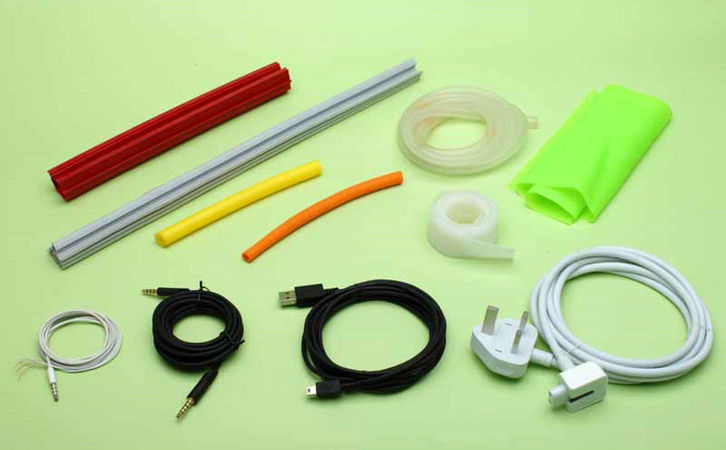
Case Studies: From Failure to Success
Case 1: Wearable Strap Delamination Problem: 45A TPE strap peeled from PU buckle adhesive in 2 weeks. Diagnosis: 65 phr naphthenic oil bloom. Solution: Reformulated to 35 phr paraffinic + 1 phr FG1901, added online corona (2 kW). Result: 8.5 N/mm peel, zero field returns after 18 months.
Case 2: Automotive TPV Seal Problem: EPDM-TPV refused epoxy in assembly. Root: Halogen FR migration. Fix: Switched to phosphate ester FR, added plasma chamber post-mold. Bonds exceeded 10 N/mm with substrate tear.
Case 3: Medical Grip Overmold Problem: Silicone-like TPE rejected acrylic PSA. Cause: 3% siloxane additive. Resolution: Removed siloxane, used UV-ozone 3 min + MS polymer. Achieved 6 N/mm, passed ISO 10993.
Testing Standards and Validation
Validate with ASTM D903 (peel), ASTM D1002 (lap shear), and ISO 8510 (90° peel). Cycle bonds through -40°C to 85°C, 85% RH for 1000 h. Measure contact angles pre- and post-aging. Conduct production sampling—every 1000 parts, one peel test. Document surface energy maps via ink testing (38-44 mN/m pens).
Cost-Benefit Analysis of Activation Methods
Plasma chambers cost $80k upfront but treat 500 parts/hour at $0.02 each. Corona adds $0.01/part on existing lines. Primers run $0.05-0.10/g bond area. Reformulation lifts material cost 8% but eliminates treatment for low-volume runs. ROI calculation: preventing 1% field failure saves $50k in warranty versus $5k activation spend.
Table 4: Activation Cost vs Bond Strength
| Method | Equipment Cost | Cost/Part | Peel Strength (N/mm) |
|---|---|---|---|
| None | $0 | $0 | 0.5 |
| Corona | $25k | $0.01 | 5.5 |
| Plasma | $80k | $0.02 | 9.0 |
| Primer Only | $2k | $0.08 | 7.0 |
Future Trends in TPE Adhesion
Laser texturing creates 10 µm honeycomb patterns for mechanical lock without chemistry. Self-priming TPEs with built-in silane grafts hit market in 2026. Atmospheric plasma robots treat 3D parts inline. Bio-based oils with zero migration emerge from castor derivatives. AI vision systems detect bloom in real time, triggering auto-wipe stations.
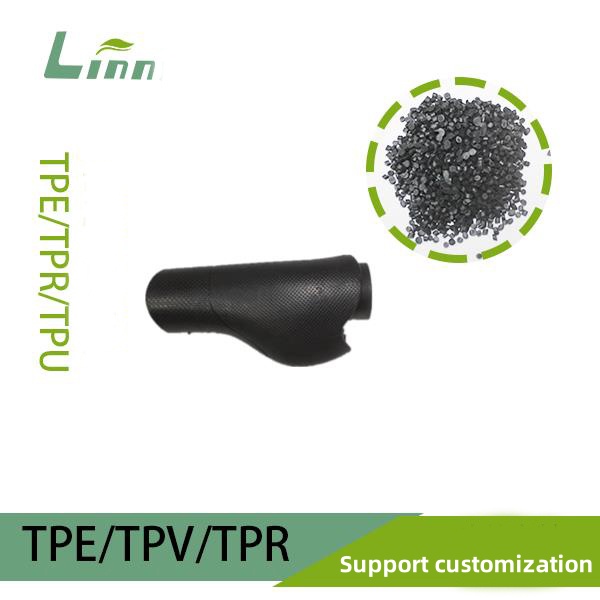
Conclusion: Turning Non-Stick into Permanent Bonds
TPE adhesion failure stems from migratory oils, low polarity, and processing legacies, but systematic surface activation, smart formulation, and process discipline deliver bonds that outlast the product. Treat every part surface as a chemical handshake—prepare it, match the adhesive, and test relentlessly. The result: zero delamination, delighted customers, and margins protected from warranty bleed.
Frequently Asked Questions
How soon after molding must I treat TPE for bonding? Within 4 hours for corona, 24 hours for plasma. Oil bloom accelerates after demolding.
Can I bond TPE to itself without treatment? Only with same-grade hot-plate welding or high-frequency if polar additives present. Adhesives need activation.
Does TPE hardness affect adhesion? Softer grades (<50A) bloom faster but accept mechanical interlocking better. Harder grades need stronger activation.
Are there adhesives that work on untreated TPE? Specialty silane-modified hybrids (e.g., 3M DP8005) achieve 3-4 N/mm on clean, low-oil TPE but still underperform treated surfaces.
Will plasma damage soft TPE? Low power (50-100 W) for 30-60 s etches <1 µm, preserving bulk properties. Over-treatment embrittles.
How do I remove mold release residue? IPA wipe followed by CO₂ snow cleaning eliminates 99% contaminants without swelling TPE.
Can I reuse TPE scrap in bond-critical parts? Only if re-compounded with fresh stabilizers and oil content verified below 30 phr. Recycled lots bloom 50% faster.
What is the shelf life of activated TPE surfaces? Plasma: 24-48 h in cleanroom. Corona: 4-8 h. Store in nitrogen-purged bags to extend to 1 week.
Does color affect bonding? Pigments can migrate; carbon black improves UV stability but slightly reduces peel. White TiO2 needs silane coating.
How do I bond TPE to metal? Plasma treat TPE, apply silane primer, then epoxy or PU. Achieve 12+ N/mm with proper grit-blasted metal.

